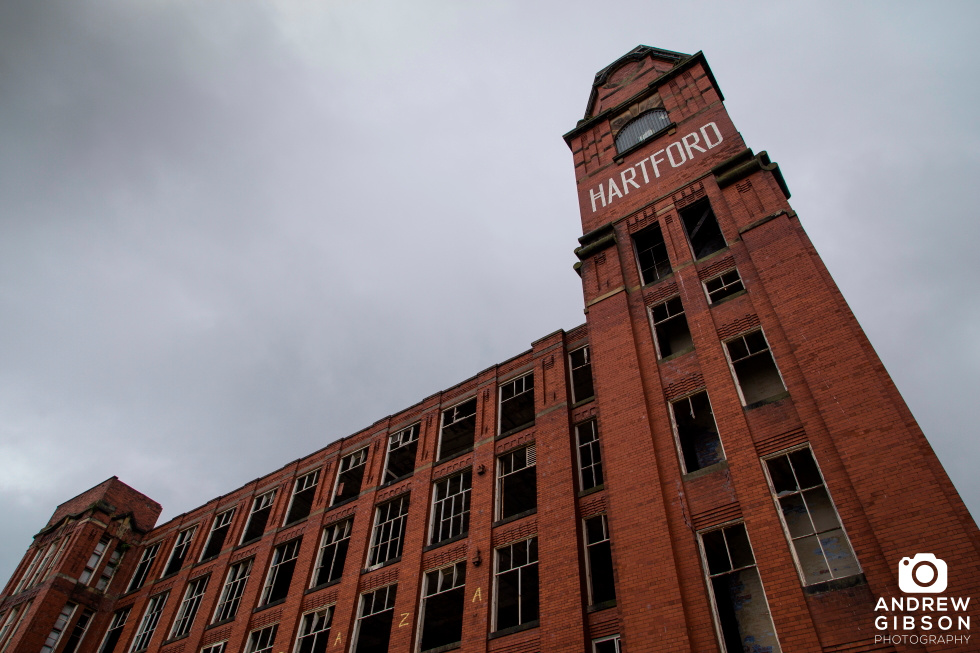Long before politicians on all sides were talking up a ‘Northern Powerhouse’ we already had one, manifesting itself in cotton mills, collieries and cooling towers across the Lancashire Yorkshire border and far beyond. The north was a thriving hive of industrial activity characterised by its architecture – and it was glad to be so.
Of course, things change. You can’t halt the passage of time but you can at least respect it and save it in such a way that future generations can see and appreciate their heritage. It’s a shame then that most planning authorities don’t appear to share this view…
Oldham was the archetypal mill town; in fact it was textile that placed it firmly on the map. By the latter half of the nineteenth century it had eclipsed other northern cities to become the most productive cotton centre in the world, but with one industry dominating output any downturn would have dire consequences. And that downturn came in the sixties with cheaper imports provoking a long drawn out and irreversible decline.
Northern mills became derelict looming over Victorian terraced streets, while more prosperous parts of the country were revelling in high-rise living – albeit briefly – and modern consumerism. At its peak Oldham had 360 mills on its skyline, a number still dwindling to this day as years of misfortune and mismanagement bring them closer to the brink, and to the point of no return. Architect FW Dixon was responsible for 22 such cotton mills across the town, with their combined 1.8 million spindles facilitating a significant proportion of its output in their heyday. Dixon himself went on to serve as both a local mayor and JP, his showpiece Hartford Mill granted grade 2 listed status in 1993. For all the good it did.
Today Hartford’s neglected and ravaged appearance has an elegiac quality that invites you to stop and look; to imagine it in its heyday. Built in 1907, this red Accrington brick giant complete with Baroque styled water tower stands eerily quiet now, a remnant of times past isolated in a twilight zone once lined with terraced streets. There are almost as many trees growing out of the fabric of the building as there are in the surrounding waste ground. And now Oldham council have sanctioned its demolition – along with nearby Durban Mill – in an act of licensed vandalism that’s becoming all too common.
Okay, so I have a slightly romanticised view of the past. Of course we must move with the times, but when your heritage is so dominated by the very buildings that dominate your town, surely it’s best to save and convert as much as you can for future generations to marvel at and wonder why new industrial buildings are so hideously anonymous in comparison? Or so that northerners can proudly say “You see that, son? That’s where all t’folk round here used to go to work…”
It won’t happen here. Demolition starts soon, and Oldham will be that little bit worse for it.
